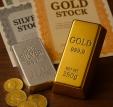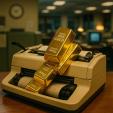Is the Best Contrarian Bet for 2016 Short US Dollar And Long Gold And Silver?

 There is a well-established reverse relationship between the US dollar and commodity prices. When the US dollar strengthens then commodity prices fall, and vice-versa.
There is a well-established reverse relationship between the US dollar and commodity prices. When the US dollar strengthens then commodity prices fall, and vice-versa.
The four-and-a-half year slide in commodity prices began in mid-2011 at almost exactly the moment that the US dollar hit a bottom and started its rally. The dollar’s resurgence has surprised many, and the currencies of commodity producing countries have been hammered hardest. Just look at the lamentable state of the Canadian and Australian dollars, let alone the Russian ruble or Brazilian real. But this cycle is nothing new.
Currency Wars
As ‘Currency Wars’ author and hedge fund manager Jim Rickards wrote earlier this month: ‘The Fed dollar index hit the highest level in the past 30 years in February 2002 with a reading of 112.8.The prior highs had been in 1985-86 during the ‘King Dollar’ period under Ronald Reagan and Paul Volcker. From the 2002 peak, the dollar plunged to an all-time low of 80.5 in July 2011, a 27 per cent decline for the greenback.
‘From that 2011 low, the dollar then staged a spectacular rally, reaching an interim high of 98.6 on the Fed index today - a 50 per cent reversal of the plunge. If the dollar moves inversely to commodities, then a 50 per cent rally in the dollar should be mirrored as a 50 per cent drop in commodity prices. That is exactly what happened.’
So this is where we stand today. Are we now at a tipping point in the opposite direction in which the US dollar will fall back again and commodity prices will rise?
‘Hot Commodities’ author and hedge fund billionaire Jim Rogers, one of the very first to call the bull market for commodities of the 2000s, says ‘No commodity goes from a baseline to a permanently new high without a 50 per cent retracement along the way’. By that logic oil prices have overshot but gold is well positioned for a recovery.
Almighty US dollar
Still why should the US dollar fall from here? Does the almighty US dollar not have a series of interest rate rises ahead to crush other currencies into the dirt in 2016? Not if Jim Rickards analysis is correct.
He argues: ‘The US economy is nearing a recession. The recent strong dollar (due to Fed tightening policies) is damaging US exports and corporate earnings. As the US economy weakens, the Fed will be forced to back off the tough talk and rate hikes and start another easing cycle, probably by mid-2016.
‘That’s the catalyst for higher inflation and a new commodities rally. It’s always darkest before the dawn. Since 2011, the dollar has had a great run and commodities have been crushed. Both of these trends have run their course and a reversal in in the cards.’
My old friend Chris Mayer of Agora Financial, one of the world’s top financial newsletter editors, has the euro strengthening against the US dollar as his contrarian bet for 2016. In his view: ‘This is one of those rare times when you find a hardened consensus built entirely on a misunderstanding of the hydraulics of monetary systems.
Euro confusion
‘The general idea of betting against the euro is that the ECB will continue to ‘ease.’ It will keep rates low and buy bank bonds (so-called quantitative easing, or QE). The mainstream tends to think these actions weaken currencies and stir inflation.’
Chris contends that this is just not the case because it means lower income for bondholders and a reduction in expenditure in the economy, not necessarily a stimulus.
‘Meanwhile, your expenses haven’t changed. And your desire to save probably hasn’t changed. You still want to set aside a certain amount for savings. So what happens is you spend less…
‘And there’s a second factor at work: The European Union has a large and growing trade surplus. So net-net, EU exporters make sales in a foreign currency. But the exporters need to convert that currency back to euros to pay workers back home, etc. This drives the demand euros higher.’
Dollar negative
In short, don’t count on the ECB to weaken the euro and boost the US dollar in 2016, and those anticipating this weakness have gotten things wrong. When mistakes are corrected, you have a reversal. Chris suggested buying US treasuries as yields would fall and bond prices rise with a weakening US dollar.
So in our Christmas exchange of emails I pointed out: ‘This is also a great argument for precious metals, or at least for a 18-24 month spike in the near future. The supply of gold and silver is far tighter than euros, and if investors are still a bit unsure on the euro then where will they go?
‘I don't recall 10-year treasuries being the best buy 2008-11 but maybe wrong on that. Gold and silver certainly was a great buy then. You've really just written the best goldbug article in a while.’
He replied: ‘Yes, I see what you're saying. I hadn't thought of it that way because I was so focused on the euro-dollar trade for this piece, but the logic holds.’
Contrarian opportunity
But really I think both Jim Rickards and Chris Mayer are right to flag up a contrarian opportunity in the US dollar which has become the most over-crowded trade in the world. As the Wall Street Journal put it: ‘Betting on a weaker euro and a stronger dollar - as the European Central Bank loosens monetary policy and the Federal Reserve tightens - has been one of the most popular positions for funds that trade currencies bonds and stocks based on theories about global economics.’
Has the crowd got this one right? Or has an overvalued dollar sowed the seeds of its own destruction with weakening exports and falling overseas income? Currencies do always move in cycles for this very reason. If so logic would suggest the only currencies with no money printing - gold and silver will be the strongest as the US dollar reverses.
How soon will this happen? Now that really is a multi-trillion dollar question. Mid-2106 perhaps, but only after the dollar strengthens again in a Wall Street Crash? This is a very tough call. Happy New Year!

















